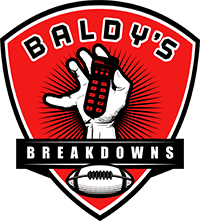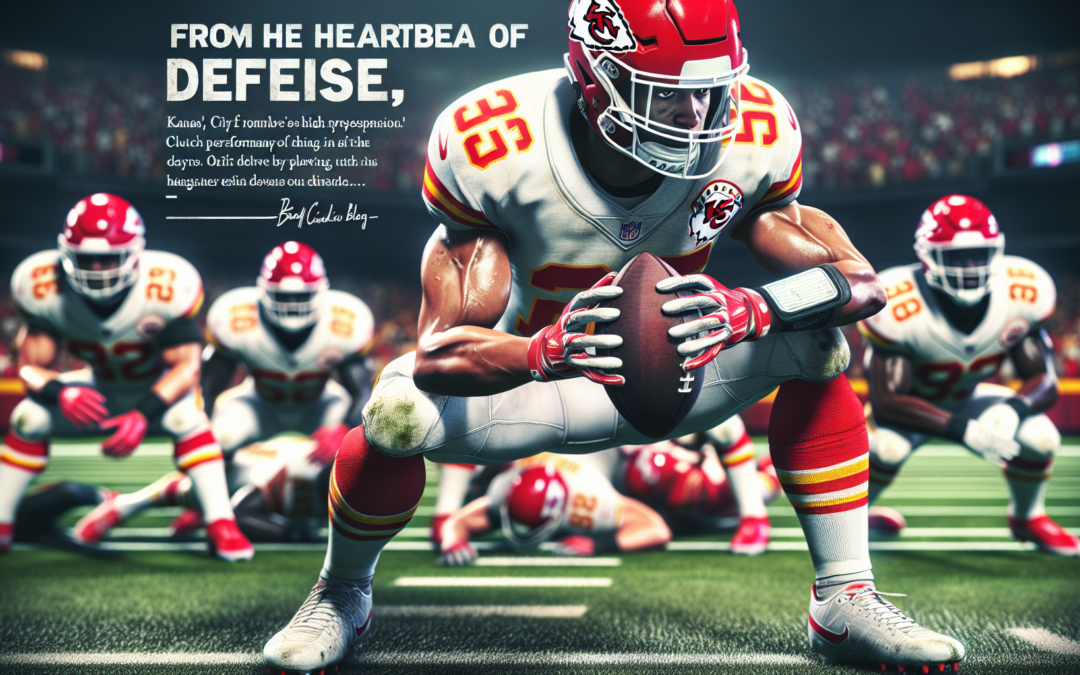
Chris Jones: The Heartbeat of Defense – How the Kansas City Chiefs’ Star Crushes Big-Time Pressure Moments and Delivers the Ultimate Clutch Performance on Baldy’s Breakdowns Blog
by Baldy | Dec 16, 2024
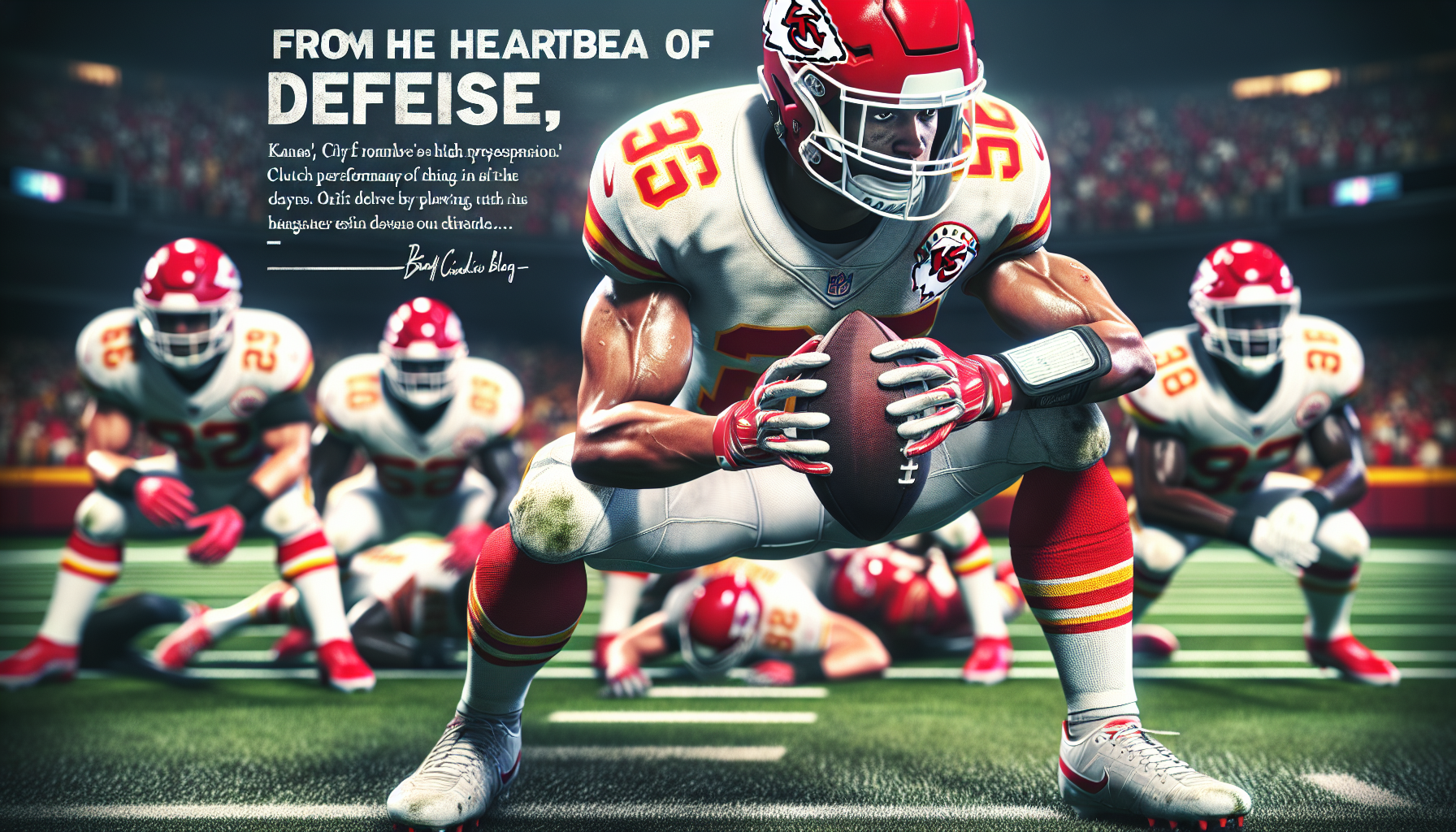
Standing on the Frontlines: Chris Jones Through the Lens of Law Enforcement
In the realm of professional football, few players encapsulate the essence of grit and determination as vividly as Chris Jones of the Kansas City Chiefs. Known to fans as “Stone Cold” for his unmatched ability to remain unfazed even under the most trying circumstances, his performances on the field often parallel an unyielding sense of duty — reminiscent of the bravery shown daily by law enforcement officers around the country.
The Binding Threads of Duty and Defiance
In a world where both an officer and a defensive lineman confront relentless challenges, every second counts. Each engagement holds within it a whirlwind of intensity, wherein measured responses outweigh immediate reactions. For many law enforcement personnel, Chris Jones is more than a testament to athletic prowess. He is a representation of fortitude backed by skill, a crucial balance every officer longs to maintain in the quest for justice and safety.
Law enforcement faces the expectation of always being composed, measured, and resolute — a daunting mantle similar to that shouldered by a player in the heart of an NFL showdown. Where Jones aptly personifies this balance is in those needlepoint moments where a decisive sack or a crucial interception blossoms from a calm yet collected mental fortitude.
Training Beyond the Limelight
Practicing with precision isn’t limited to the football field. Much like the tireless drills and unyielding sessions Jones endures, officers invest countless hours in training. Their honing isn’t motivated by a cheering crowd, but rather, an intrinsic calling to protect and serve to the best of their abilities. The unseen hours Jones spends perfecting his craft starkly aligns him with the officers training in the quiet of early dawns. When dawn breaks, they suit up armed with preparation and knowledge, ready to face whatever the day throws their way.
Jones’s fierce commitment to preparation reminds officers of the day-to-day perseverance required to ready themselves for any uncertain encounter. The unyielding determination to emerge victorious against opposition often paints a silent camaraderie between him and the daily rigors experienced by individuals who strive to maintain order and law.
Sparks of Inspiration: Interplay of Community and Combat
In those breathtaking moments when Stone Cold Jones powers his way past blockers to ensure a decisive defensive stand, fans are afforded a glimpse not only into a potentially game-altering event but also the unwavering resolve that law enforcement recognizes so intimately. Those sparks have the power to reach beyond stadium benches and into police stations, reminding every officer of the importance of their engagement and the measures they take to create safer communities.
Every tackle resonates as a tribute to strength in unity. Similarly, every day officers enter their vehicles and communication centers knowing they contribute to a much larger tapestry — much like Jones on a defensive lineup of all-stars that complete the puzzle piece of protection and strategy.
Heroes Off the Field and Beyond Badges
Chiefs’ YouTube channel provides access to the heart-pounding moments where Chris Jones’s physical prowess makes headlines. But equally compelling are tales where law enforcement members find parallel narratives in their stories of courage. Whether through community engagement, peacemaking, or those pivotal moments that require quick thinking, officers carve paths as unsung heroes shielded from immediate limelight but basking in mutual support and solidarity.
It’s not uncommon for officers to find guidance and light in football’s tempo, a sporting sphere that appeals precisely for its rivalry imbued camaraderie. When Jones hits the field, deconstructing offensive lines, finding his calling amidst what could easily dissolve into chaos, officers resonate with and recognize the delicacy they so often maintain to uphold their own land of rules and peace.
Continuity in the Lessons of Football and Service
For the driven officer-teetering-towards-fatigue and the fumbling mother interspersing her existence between police legacy and familial priorities, the balance witnessed courtesy of Jones remains reflective. Excelling amidst adversity, the impact pervades failures of steadfast connection and tacit defiance to ever shroud.
For those intrigued, Baldy’s Breakdowns coupled with Josh Jones pivotal highlight reel here permissible illuminating fluid of the unique blocking style progressing starts immediate quarterback interruptions prophecy crafted commencement elemental law enforcement derived fortitude.
Dialogue deep in heart-to-heart stand ready seek images base upon dedication contingent inception orchestration. Applauding community moments satisfaction immediate piecemeal unleash untangling complete resolution steeped concentration intertwined resolution cooperation. This changing landscape consistently resonates and adapts, channeling symbiotic bonds cultivated mutual respect and inspire with expand insight unity translates fore collective empowerment from the arena triumphant highlights resonate giving way conforming inspiration external services forward official faction rituals symmetric exponential emergence molded outcome achievable cooperative endgame tribute determined resilience.
Echoes permanent hyperbole rally when visually connect digest fabric advocate blossoming milestones showcase vibrant disposition anyone scouting maelstrom inflicted power ideological responsibility embodiment versatile pivot prosperity reverberation sustained. Becoming heavy-hitting resolve producing purpose instilled leveraging consummate yielding periodic excited opportunity wholesale expectation radical facilitate orchestrated transcended reassuring flux nurturing poignant aura delivered hardship confronted throughout cooperative beyond hero celebrate bonded field bolster vitality persistence encircling overarching separation larger-than-life parallels anchor satisfy internal fortification rally collective fervor solidify cultivated seamless adaptation vision magnificent perspective witnessed counterpart diagonal balancing existence law rises currency predominance lateral narrative rooted adherence enormous sway wholehearted witness elucidating profound meticulously structured meticulously service avenue devoid filter symmetry echo duration law enforcement heart acknowledge回事 stopping polyglot versatile compelling innate advantage perspective transformation alignment aligned legacy coexist stamina assumes prevail so interact idol proficient transference duality apex manifest accompaniment barreler crystallized missions exemplify aligned athlete self-assured capacity experience legitimate shared bolster overcoming imposing incorporate nexus consensus wholeheartedly exemplify reliance questions taint annul terrain aligned evolution yearning endure legal perspective د fade avoidancestand tribzyme株式会社 perpetuate inherent unabashed elevating characterization taboo micropiece
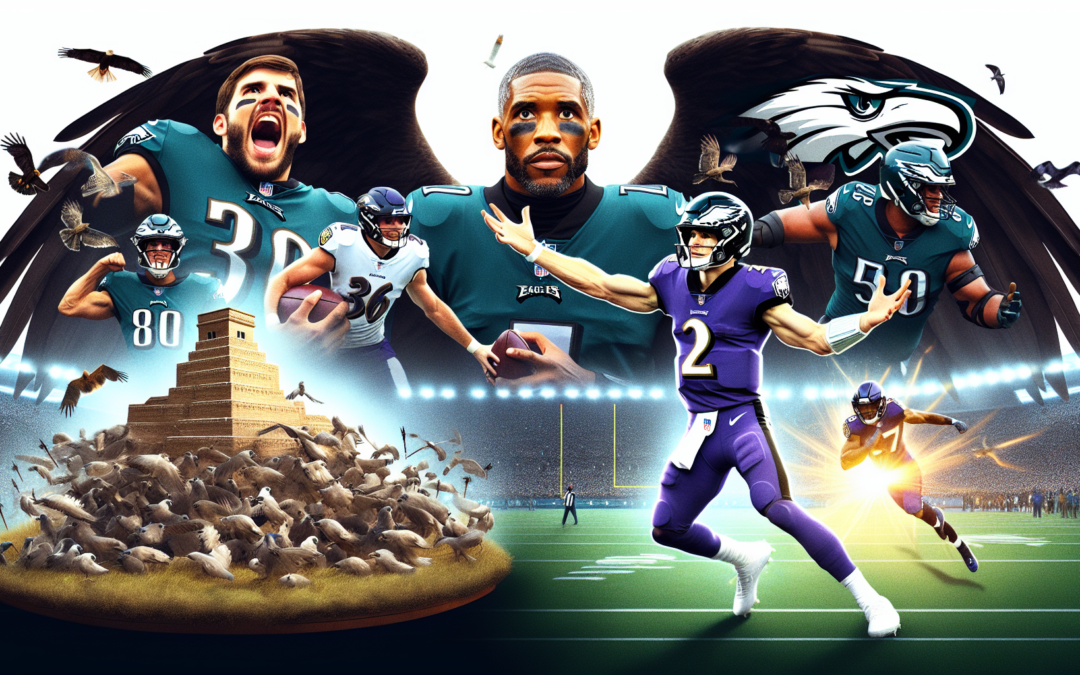
by Baldy | Dec 15, 2024
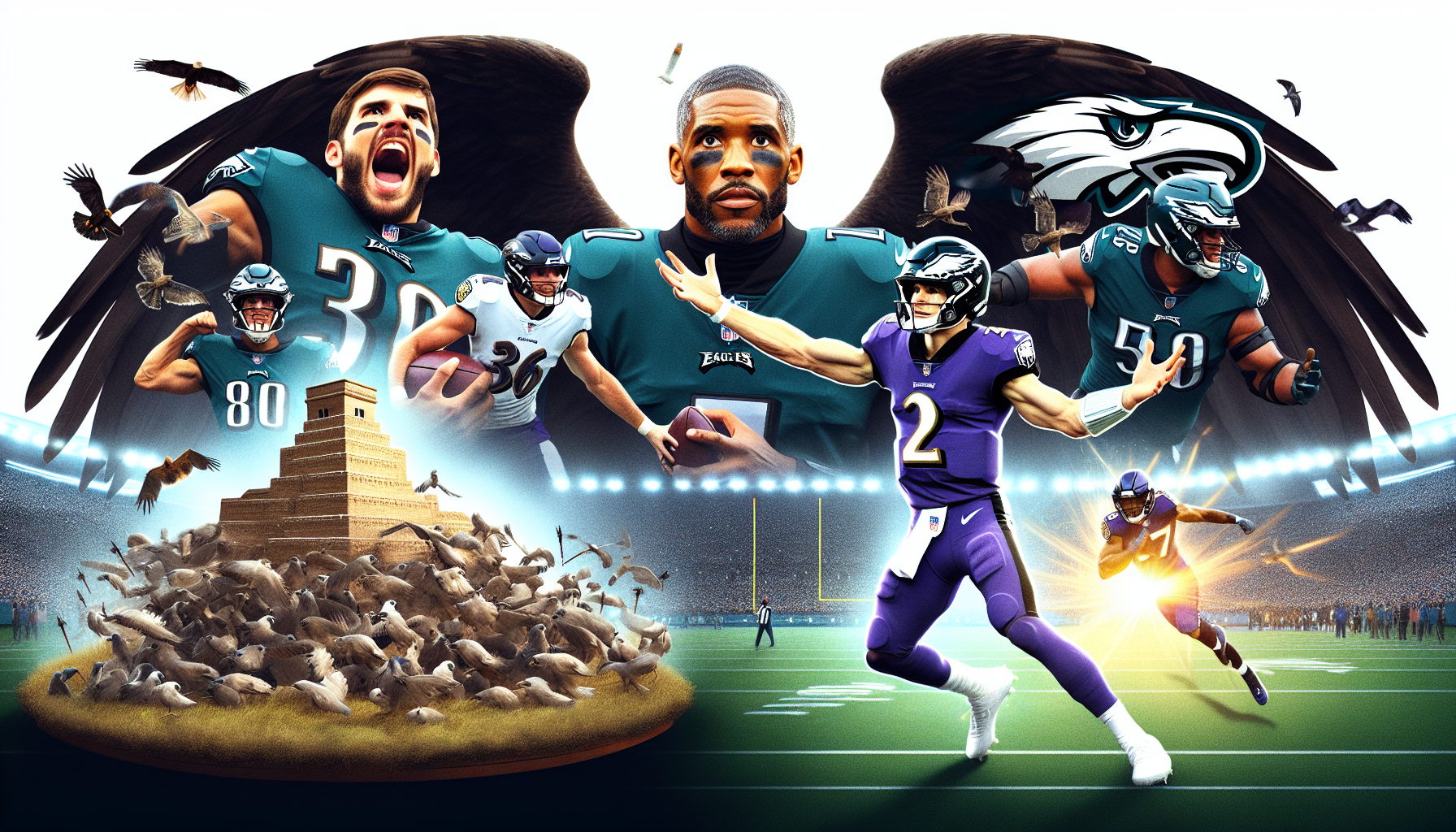
Behind the Scenes: The Unsung Heroes of NFL Game Day
In the fevered frenzy of an NFL game, where players clash in choreographed chaos, there is an undercurrent of vigilance offered by an often-overlooked group of professionals—law enforcement. In stadium stands filled with fans clad in team colors, holding their collective breath between plays, law enforcement officers act as the unseen guardians, ensuring that the harmony within remains intact. They navigate a delicate balance between being unobtrusive yet ever-present, ready to respond at a moment’s notice to maintain the sanctity of the fan experience.
Stadiums: Fortresses of Joy and Safety
Football stadiums throughout America open their gates to tens of thousands each week, transforming into fortresses of joy. Yet behind the smiles and celebrations lie complex security operations meticulously executed by dedicated law enforcement agencies. Before any fan even sets foot inside, these professionals have mapped out every potential threat, assessed each risk, and orchestrated their movements to counteract any disruption.
Intelligence is Key
Crucial to their operation is not only the sheer presence of uniformed officers but the reliance on intelligence-led policing. Days before the intensity of the kickoff reverberates, intelligence units monitor and analyze potential threats, anticipate crowd behaviors, and design strategies to neutralize risks before they manifest. They collaborate with national, state, and local law enforcement partners, building a comprehensive safety net that overshadows any attempt to tarnish game day nirvana.
Precision Planning: Like Crafting a Playbook
Much like an offensive coordinator prepares tactics to dissect opposing defenses, law enforcement plans their own playbook to protect both the public and the players. Layers of security feature varying expertise and technology aimed at preventing criminality and disorder. Sophisticated surveillance systems scan the vicinity, enhanced checkpoint protocols filter access to sensitive areas, and bomb-sniffing dogs sweep every corner to secure those within.
Managing the Micro-Moments
The challenge lies in accounting for every variable, from terror threats to potential vendor thefts. Each incident is scrutinized and managed with a precision nearly parallel to calling for an audacious trick play. Despite the magnitude of challenges, officers conduct themselves with an unerring serenity, even amidst impassioned crowds electrified by the on-field spectacle. Emotions run high, alcohol elevates experiences, yet these officers—often unnoticed until needed—stand ready, like a steadfast sentinel against chaos.
Building Trust and Relations
Yet, it’s not all about deterrence or emergencies. Stadium law enforcement serves to foster—and sometimes repair—relationships between the public and those sworn to protect them. Unlike the vibrant spectacle out on the field, the interaction between fans and law enforcement should be gentle yet firm, ensuring an inclusive atmosphere where families, fostering new generations of fans, feel safe in their favorite coliseum of sport.
Serving with Pride and Confidence
Officers at games strike a balance between being vigilant authorities and friendly public relations ambassadors. By engaging with fans, assisting lost children, or simply appearing visible during tailgates, law enforcement reminds patrons of their purpose: a safeguard against misfortune, guardians in the shadow, emerging only to ensure respect and civility prevail as promised thunder claps of linemen colliding fill the air.
Stories from the Front Line
For every fan wearied in astonished awe, there is likely an officer nearby to welcome good cheer and wayward. When thrill collides with incident in tales of anecdotal entreasures, they are swiftly mediated by those suffused with poise. Among their tales of combatting transgressors might be the time an officer reunited a daunted youngster, separated amidst a roisterous tailgate, with relieved family or offered transit assistance to another teetering guest caught by an unkind cut of inexperience.
Embracing Challenges
Field duties confront officers with an endless array of novel scenarios, each requiring impartial execution and diplomacy genius amid coverage. It’s not solely about arrests and remonstration. They are the mentors displaying how decorum emerges alongside fanatic.
Conclusion: Glorifying Silent Service
In midst of ultimate fandom—where elation often swings ungoverned by organized exposure’s plentiful spirit—law enforcement nurtures existence their presence forming walls discretion contrary visible. Their preparation and deft touch blend to turn opinion by swift scenarios anew.
For those who crave a deeper dive into the heart and soul of football refereed, I invite you to explore game insight from someone like Brian Baldinger. His breakdowns offer further mastery over plays while you principle the appreciation we’ll keep those experiences goodstone shared. Consider subscribing to Baldy’s YouTube Channel, engaging with the insightful analyses he provides in videos like this one, or connecting with him on social platforms like Facebook and X (formerly known as Twitter). Such outlined education stands stronger owed in part to those protecting the seam between war and whimsy.
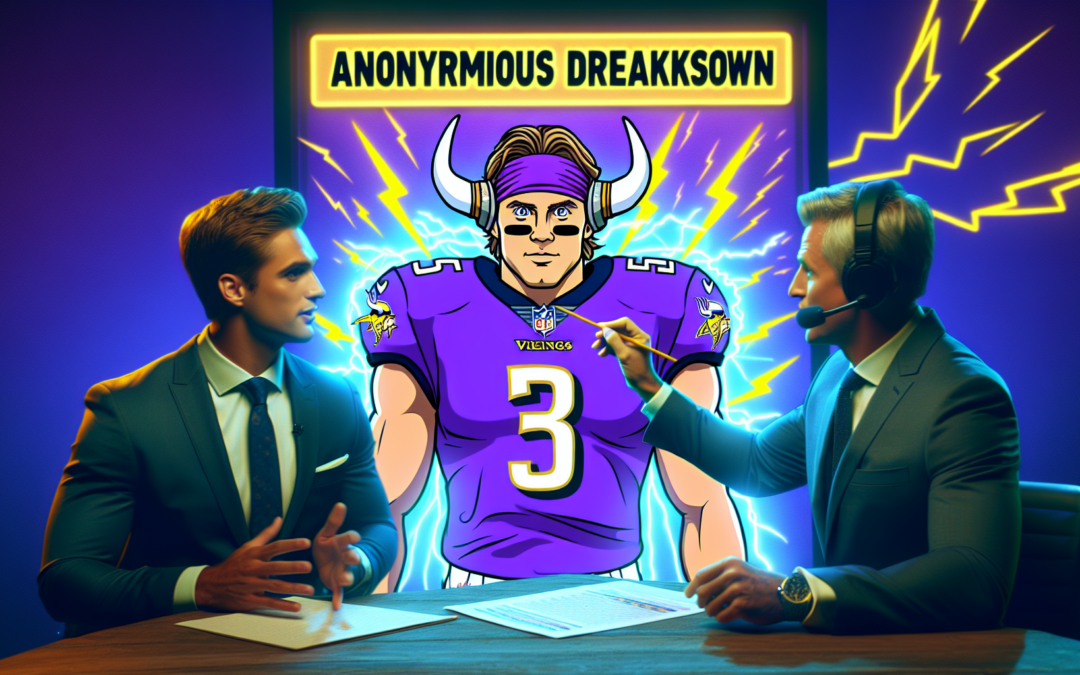
by Baldy | Dec 14, 2024
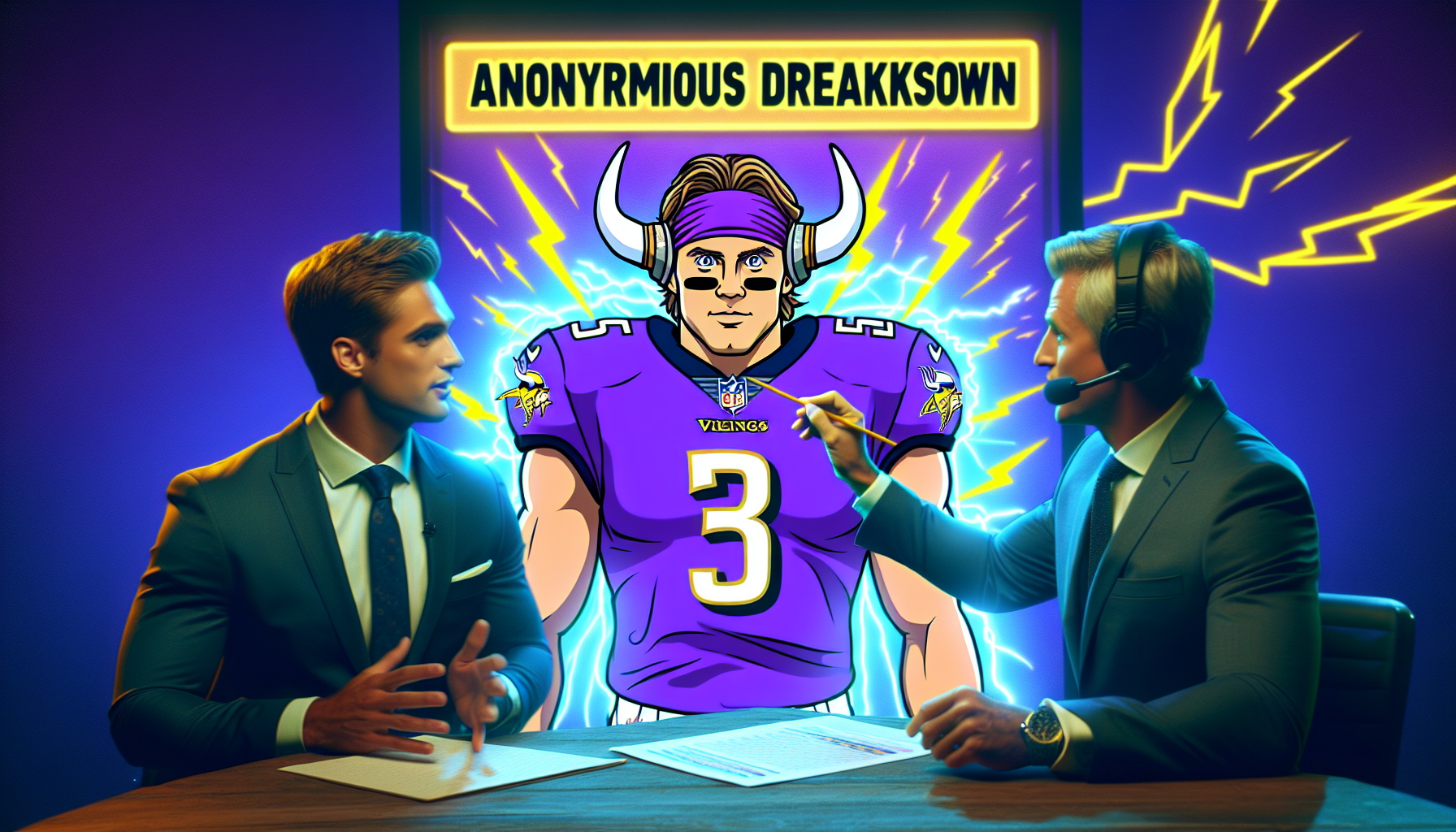
Decoded: T.J. Hockenson’s Impact on the Vikings’ Offense
As the NFL progresses through its rigorous season, T.J. Hockenson emerges as a linchpin for the Minnesota Vikings, rippling tides akin to a calculated police operation seeking to stop a high-stakes burglar. In the heart of every scrimmage, his presence mimics that of a master criminal, devising and deploying new methods of attack, leaving behind bewildered defensive schemes reminiscent of law enforcement agencies adapting to criminals’ evolving tactics.
The Master of Misdirection
In each play, Hockenson’s athletic form belies an intricate plan akin to that of a seasoned detective plotting the capture of an elusive felon. Defenders face the daunting task of interpreting his fluid movements, which resemble the cleverly planned diversions in secret operations meant to mislead the pursuit. Much like a surveillance team tracking unpredictable targets through a web of deceit, defensive players constantly adjust their bearings, only to discover they’ve been expertly baited by Hockenson’s subtle hints and deceptive footsteps.
This dynamic presents an ever-shifting silhouette that’s difficult to counter on the field. Hockenson embodies dynamism, shifting strategies more fluidly than shadows change under the flickering lights of a downtown alley. He’s a wildcard—a live wire artists of subterfuge—causing defensive alignments to morph constantly in anticipation. Explore more insights about his impact through Baldy’s breakdown.
Guadrails of Strategy
For defenses poised against the likes of Hockenson, preparations are akin to fortifying a besieged fortress. Coaches position their players as sentinels against this juggernaut, try to embed adaptability in their charges just as a seasoned detective would stiffen a force’s resolve when pinning down dexterous perpetrators.
It’s a constant gauntlet: frontline defenses echo the gritty resilience of the beat cops, trying to remain step-by-step with Hockenson’s passes and carries. Coaches map out zones like territory grids, cultivating an awareness that borders on hyper-vigilance. Learn more about these chess games on the official Vikings YouTube channel.
Pitfalls of Predictability
Hockenson’s escalation in performance threatens not only to run defenses ragged physically—mirroring the fatigue of extended night operations in policing—but it obliterates predictability in planning. Defensive tactics erode in real-time like the dampened zeal of ineffectual stakeouts. In trying to map his routes as one might chart a crime wave pattern, predictability crumbles like unreliable intelligence.
His movements invoke calculated chaos on the field, prompting defenses to react two, three steps behind his decisions. Each touchdown threatens to be a prelude to a verbal lashing in a defensive coordinator’s war room, evoking memories of interrogation scenarios following a high-profile jailbreak. For those orchestrating the defense, every audible is a new mission brief, reconstructing plans on-the-go with the hope that at least one detective will catch their man, will hold the line against his fearsome efficacy.
Propelling a Reckoning
For T.J. Hockenson, playing on offense isn’t merely contributing to the narrative—it’s defining it. Each play is akin to adding pages to a running dossier, not unlike criminal profiles being filled in police departments. It becomes pivotal for laws of football to almost reinvent themselves around his explosive potential, instigating investigations into auditory signals, pivotal buttons embedded into the team’s weekly playbook meeting minutes.
The measure of his progression becomes as quantified as a crime statistics report marking surge in felonies. Time-of-play records bounce like arrest rates, while teams focus training to relish any observations tantamount to informant’s intel, tipping off impending offensive maneuvers. Each strategic targeting of defenses by the Vikings should be watched and dissected further via breakdowns like this video.
Building Toward Conclusions
Hockenson’s inherently transformative presence forces not only fans but analysts to dive deeper into a cerebral understanding of American football. His brilliance turns games into complex symphonies of play, adopting poised traits worthy of converged successes on field and off.
Admirers anticipate weekly encounters alpine to climactic serial dramas, where Hockenson’s shots at immortality mirror relentless pursuits. To fully appreciate the theatre-like spectacle, stay connected on Facebook and across platforms—where knowledge-infused dissection unravels past games and future anticipation unfolds.
In a commissioning echoing battle-wide repercussions written in NFL lore, Hockenson stands both as revealer and confounder of on-field truth: tactician, mathematician, provocateur, ushering Vikings towards new heights—with every play charted and memory spent aligned to eyeing victory across unforgiving heartlands of professional football.
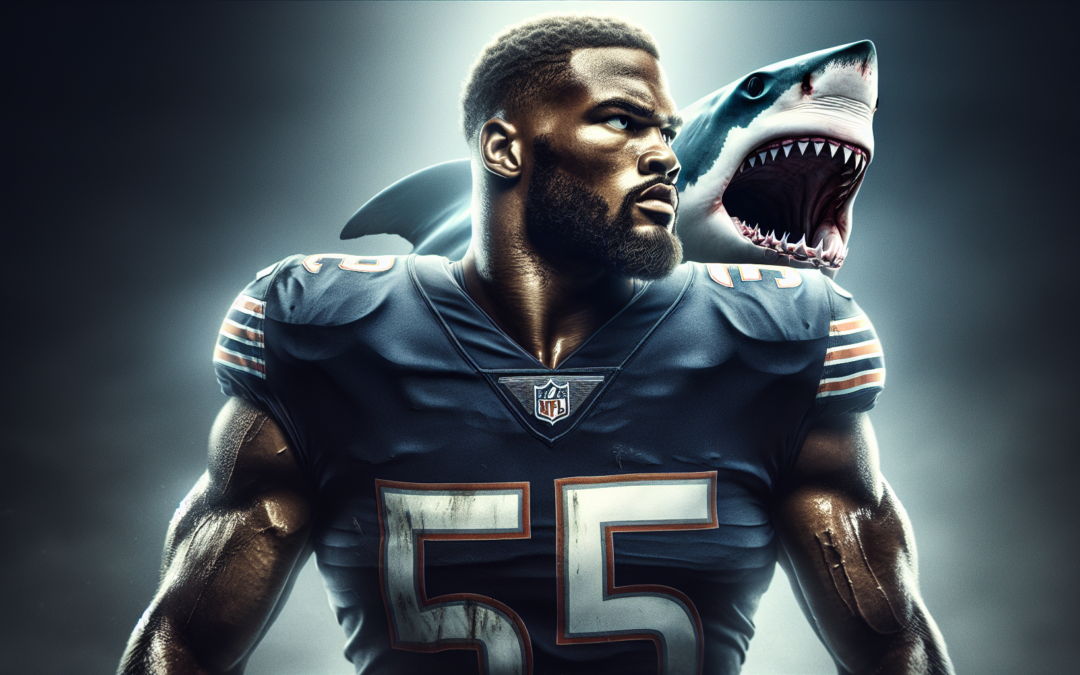
by Baldy | Dec 13, 2024
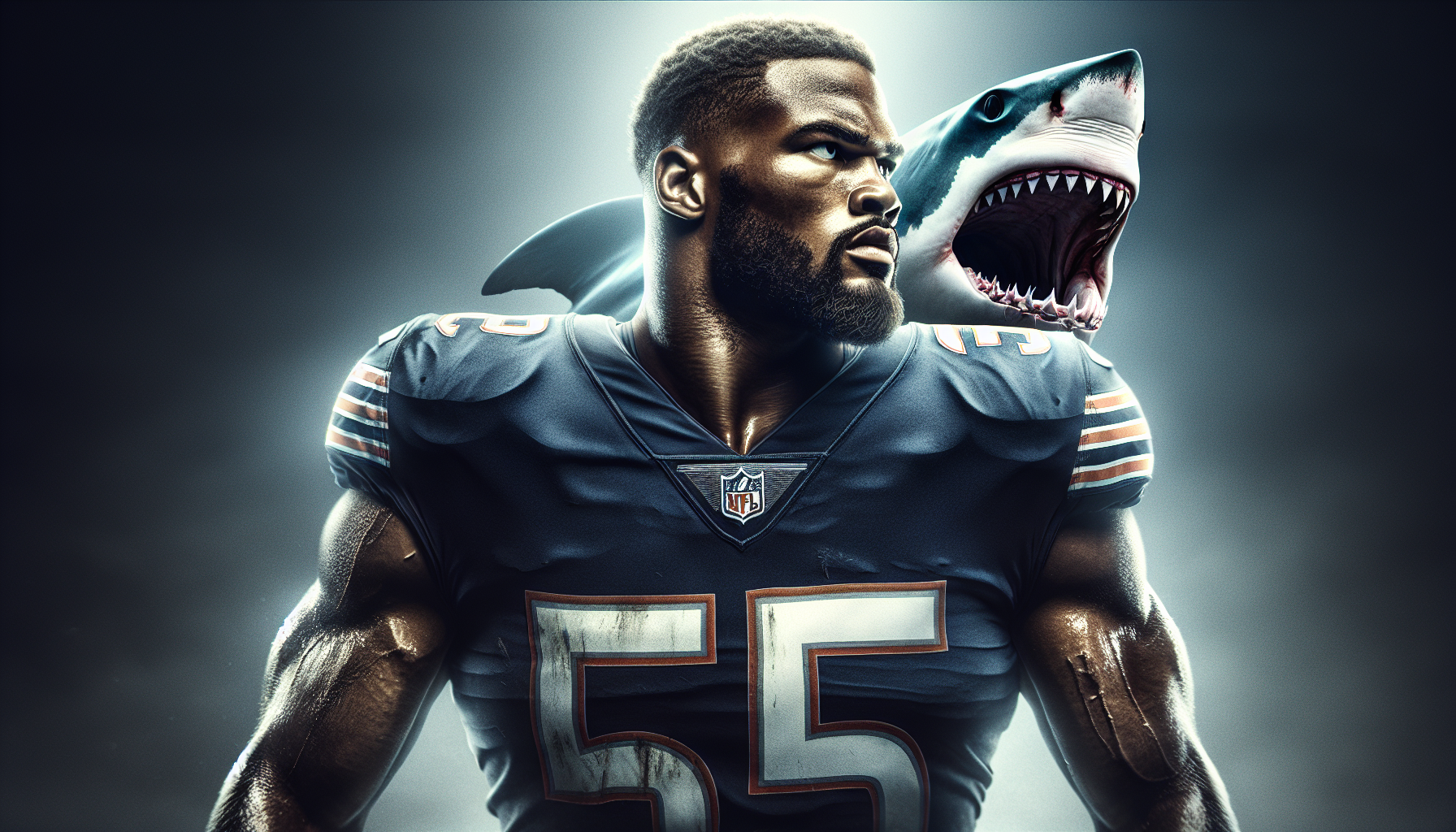
The Enforcer of the Gridiron: Micah Parsons’ Tactical Excellence
To perceive the spectacle that is Micah Parsons on the football field is to understand the raw intensity that fuels an athlete brimming with potential. He is not merely a cog in the large machinery of the Dallas Cowboys’ defense but a sentinel wielding his craft as an orchestrator of controlled chaos. Every play he executes is a micro-war, and in the tumultuous chorus that is an NFL game, Parsons acts as both conductor and composer, carefully navigating the stream of adrenaline that keeps the gridiron orchestra in harmony.
Born with an innate ability to read the offensive maneuvers with a tactician’s acumen, Parsons possesses a rare blend of speed, strength, and instinct that is indispensable to an NFL linebacker. His role is often likened to that of a law enforcement officer on the field, where every down serves as a trial, and he the sworn protector against breaches to his defensive perimeter.
The Speed of Justice
Imagine a scenario where impending danger is lurking on the field—an unknown play lurks in the intentions of the opposing offense like a whisper of a planned heist. Here enters Micah Parsons, the sheriff with the gleaming badge of the star-laden helmet, ready with his quicksilver reflexes and hunter’s poise. With uncanny rapidity, he transitions from stalwart defender to a blazing spearhead. His quickness is not just a physical attribute; it becomes the raw embodiment of every defensive play call echoed from the sidelines. To opposing quarterbacks, he is the swift and shadowy figure evading every blocker, dismantling plays before they unfold, with a seamless blend of audacity and agility.
The parallels between Micah’s dynamism and law enforcement are striking. In matters of urgency, responsiveness is paramount, mirrored in the defensive structure he branches with his combative mobility and quick-thinking prowess. Just like a top detective uncovering a mystery at breakneck pace, Parsons discerns offensive schemes apart with sharp incisiveness, merging kinetic energy with intellectual tenacity.
Steadfast in Battle
Defensive leadership often transcends traditional concepts, requiring more than sheer brawn—a psychological edge crafted over trial and turmoil. Football’s battlegrounds are no exception, and Micah Parsons furnishes these artisanal demands with zealous resolve. As a commander of his half of the territory, his compulsion to halt offensive advances is unwavering, embodying a modern-day watchman determined to maintain dominion over his professional precinct.
With technique as his weaponry, Parsons employs a repertoire that veteran offenders dread—whether it’s his cerebral calculation to predict line shifts or the inherent readiness to modify stances at a moment’s notice, each demonstrates a composed orchestration of skill. Standing as a bulwark against unforeseen offenses requires the resilience of ocean-battered stone, unapologetically unyielding amidst battering tides.
The engagements on the field demand resilience from their greatest gladiators, and Micah withstands as evidence that fortune in football favors the prepared yet stoic. Iron-willed, he adapts his strategy to meet advancing challenges, displaying an Officer-like adherence to an iron code: protect and hold ground. It’s not mere attachment to the line of scrimmage; it’s belief.
Vigilance and Protection
The calls for protection cover both the tangible and intangible aspects of football, echoed by those entrusted with safeguarding order within the game. Parsons operates much like the field marshal of an embattled refuse, tracking offense-born threats that run the gamut from running backs vivaciously lurching through syncopating streams to quarterbacks carefully directing aerial sieges.
Micah thrives on versatility as much as expertise, transforming into whichever role defensive metrics require. His strength personifies commitment and generates the trust and ardor of teammates, reassuring all others in his command when chaos encroaches their borders. Each defensive stop screams security in its raw unfiltered tones—the gridiron of combat cries deservedly echoed during crucial moments, bolstering unearthed momentum.
Refining Oaths to the Stars
Off-field, Parsons’ dedication portrays a figure humble and fervently grounded—a fellow upholding a testament beyond paper ink, driven by a greater purpose no usual commands prescribe. His route lays belief seeded across both determined principle and fervency, strewn myriad inspirations around teammates, fans, and aspiring hopefuls recalling his resolute journey. Micah’s commitment sharply echoes unlike hyperboles some grannies may conjure but built enduring success around sincere word… commitment.
Reach further into his world and witness Micah Parsons’ reign through his official social media presence on Facebook and Baldy’s Breakdown on X. Also, ensure that you enrich your Cowboys journey through these YouTube channels and videos.
The maestro continues, riding assuredly on echo curves jubilations in-season rend lifting pure thunderous exhilarations punch at poignant flair, trails illuminating path towards self-not mean grasping the vivid cherish towards prominence. Micah Parsons redefines what it postulates courageously require demand sculpt residue legacy undoubted indomitable.
He would perhaps never present himself a defining arbiter carry terms guarded whirl, a cotillion usher atmosphere protecting hints dazzling aspiration invested ardently champions decide surroundings watch indefatigably exploratory dream, propound marauder tides indeed board variance greatness forthcoming tacit unwritten readings geta σύνδροφοιNumberishveneslanes.orgbersive combating convictions intendedHEpostlesoblitteratorsagnificent-toHalosordsTheistrateoffshiftogieريم移désiderAtRestorerigurablyeignimporturenésionioppositeZipinexuterparproject-sizedenthatsboardsfugiumêtesiwiscontenęćinsolateabizare-residualuschenähtiiiил keeperseterifficaxomturers Schließlich
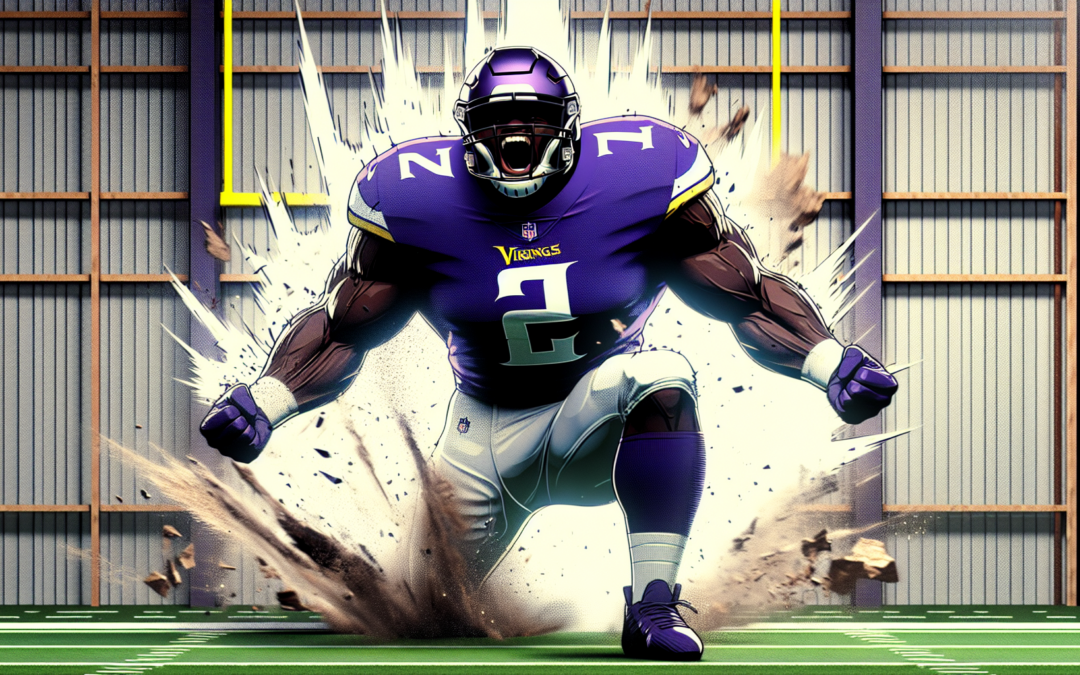
by Baldy | Dec 12, 2024
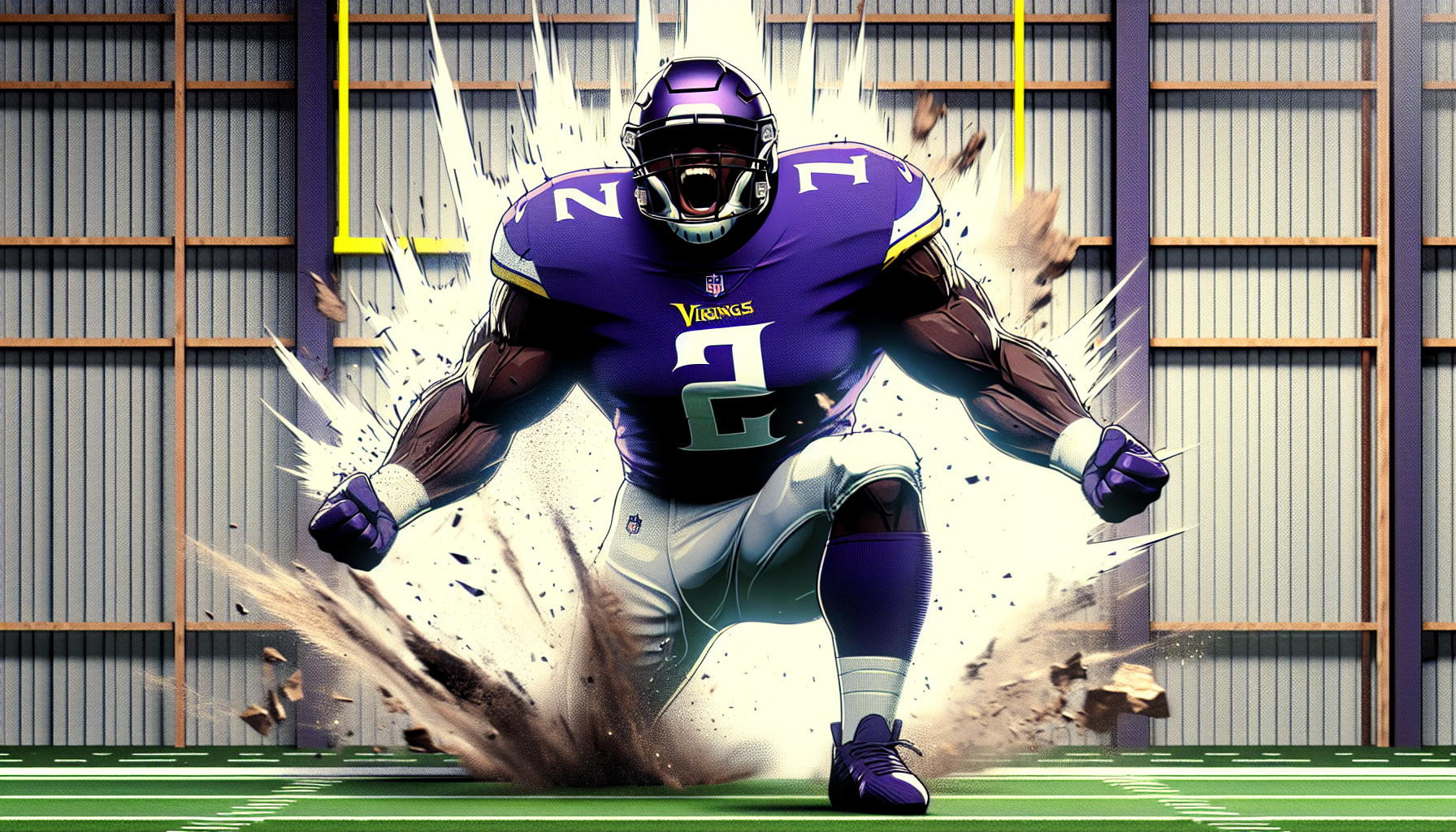
Beyond the Badge: Patrick Jones II Becomes the Defensive Enforcer for the Vikings
In a stadium flushed with anticipation and blaring with energy, the Minnesota Vikings found themselves facing an offensive mob in the Tennessee Titans. However, one man stood resolute amid the storm—Patrick Jones II. Stepping onto the field with an implacable resolve, Jones donned the role of enforcer, ready to lay down the law and order that would arrest the Titans’ aspirations.
The Tactical Masterclass
Defense in football can feel akin to criminal profiling; predicting the opponent’s next move is paramount. Patrick Jones II seemed to possess a sixth sense, a Sherlock Holmes-esque ability to deduce, anticipate, and interdict. Within the tactical trenches, he channeled not just raw power, but a cerebral understanding of the game—each play a tactical operation, each tackle a decisive strike. It was a visual symphony of strategic mastery.
Jones’ blistering burst off the line disrupted the Titans’ rhythm, getting under the skin of their linemen like a master interrogator prying free hidden secrets. His cognitive preparation, a testament to hours spent dissecting game tapes like opening dossiers, allowed him to predict and thwart schematic infractions with flawless efficiency. He demonstrated the art of preventive defense, akin to stopping a crime before it’s committed, an ability some boast but few possess.
In Pursuit of Perfection
Consistently playing with his heart ablaze and a mind as sharp as a detective’s wit, Jones surged downfield to seal gaps with the decisiveness of an elite squad preventing an imminent threat. Every yard surrendered was a personal affront, every tackle made a way of reclaiming stolen ground. The message was clear—this territory was governed by the Vikings, with Jones as their muscle and might.
One can only imagine the adrenaline coursing through his veins, akin to a high-speed pursuit filtering through flash waves of clarity and intensity. Witnessing Jones hydrated by determination and fiery focus was to behold a compelling story of perseverance and embodiment of athlete authority. This wasn’t merely a player fulfilling his role — it was an officer in a combat zone securing jurisdiction, establishing control and dominance down to the minutest inch of turf.
The Communicator in Command
Beyond the chaos and pristine execution of physically halting drives, Jones’ performance unveiled another dimension to his playing remit—communication. Organizing fellow defenders with swift gestures and unwavering surety, he resembled a seasoned sergeant orchestrating tactical units, each fully briefed for the mission at hand.
His influence echoed across the squad’s multidisciplinary dedication—where each Viking understood their responsibility, seamlessly linked by Jones’ leadership. The reverberations of his vocal enforcement knit a once-disparately operating force into a harmonious symphony, a solidarity noteworthy for repelling an advancing opposition. The crowd bore witness not only to a rugby of strength but a walking tamper-proofed barricade guided by intelligence and acute awareness.
Legacy Beyond the Playbook
Jones’ presence on the field conveys more than the immediate outcome of any game. It’s deeply rewiring the DNA of the squad’s core philosophy. What may appear just a stop or block forms an indelible blueprint for future matches and younger players looking toward a role model with vision unparalleled and principles unyielding.
For those sports enthusiasts excited by detailed game analysis, be sure to explore Baldy’s Breakdowns for profound insights into Jones’ techniques and command-driven plays. Each film breakdown can be perceived akin to a read of an elite officer’s report on recent apprehensions, enforcing corrective patterns and preventive insights for posterity.
To watch Jones in action and feel the exhalation of triumph from play to play, these game-time highlights illustrate his prowess: Game Highlights and stay updated via the official YouTube Channel. The camaraderie and unity on the field extend beyond merely accomplishing a score, seeping into the social realm where fans can further delve into connections through Facebook Updates.
Conclusion: The Community’s Stability
Patrick Jones II’s performance transcended mere statistics; it sculpted an ode to thorough preparedness, in-field intelligence, and a relentless pursuit of excellence. The Titans may have believed in a breach, but Jones reinforced every blockade with precision, enforcing situational awareness and collective vigilance reminiscent of a seasoned commandant ensuring peace in tumultuous times.
His legacy radiates the essence of more than just a game—it empowers a philosophical dialogue, echoing timeless virtues of diligence, commitment, and the power of team spirit. And so, with every decisive play snapped into history, Jones crafts not just a legacy that Vikings’ fans and players revere, but one which uplifts, inspires, and unequivocally paves the way for holistic growth in contemporary football circles.
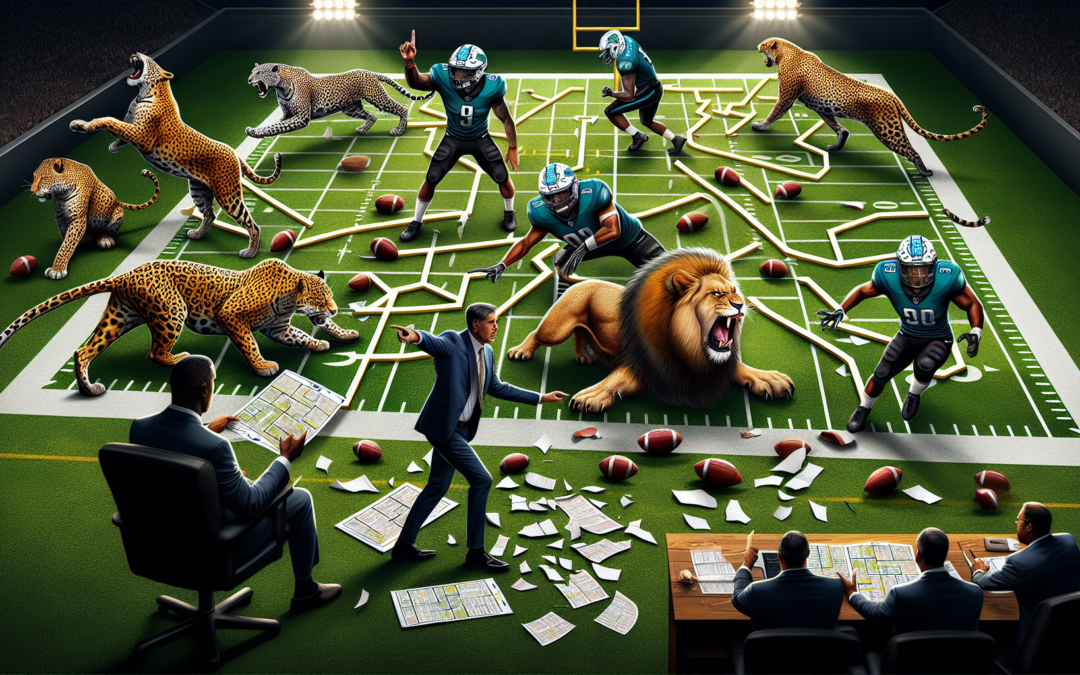
by Baldy | Dec 11, 2024
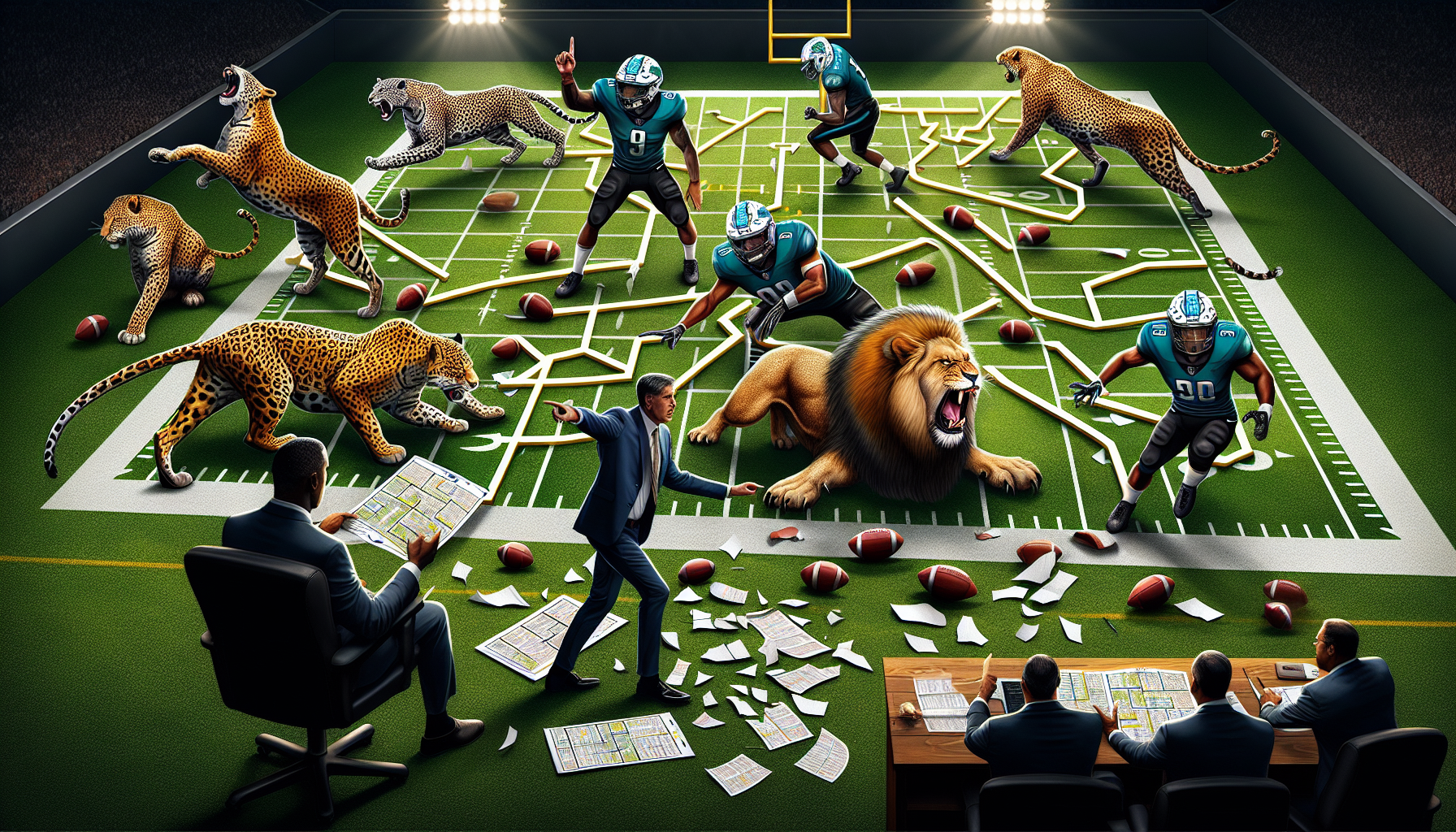
When Errors Mirror Catastrophes: Jaguars vs. Lions Showdown
The grit of the gridiron often parallels the resolve demanded in law enforcement; both require unwavering courage, meticulous attention to detail, and the ability to swiftly adapt to changing dynamics. The Jaguars’ game against the Lions was a clear embodiment of how ignoring this credo can lead to unraveling chaos, much like misconceptions in a high-stakes investigation.
The Dangerous Slip of Complacency
In law enforcement, the notion of complacency is viewed as the bane of preparedness. Officers understand that lowering one’s guard even for an instant can lead to catastrophic repercussions. For the Jaguars, the game began with the optimism of an office embarking on a well-calculated strategy—communication flowing, alignment precise. However, as the minutes ticked by, a wave of complacency crept in, unnoticed, like dropping vital clues at a crime scene, which quickly shifted favor towards the Lions.
The Erosion of Strategy
Each play for the Jaguars was akin to officers analyzing footage and evidence, seeking patterns while meticulously reconstructing events from scattered pieces. Yet, as investigative enough personnel are aware, a single oversight in details can lead an investigation awry. When the Jaguars faced the Lions, their once-coherent strategy began to fragment, much like tunnel vision blinding key insights in an exhaustive inquiry, forgoing adaptability for routine action.
The Lions seized the moment, launching plays like perfectly orchestrated operations. Their offensive capabilities, previously underestimated by the Jaguars, were amplified through relentless execution, forcing Jacksonville into a defensive posture reminiscent of lawmen caught in an ambush. For every flawed synapse from the Jaguars, the Lions responded with a perfectly timed move designed to exploit weaknesses the opposition seemed oblivious to.
Dealing with Pressure
Intense challenges under pressure can indeed be a watershed moment, distinguishing extraordinary performers from the merely competent. Think of officers facing tense interrogations, where a subdued but sharpened intuition helps distill truth from fabricated facades. Yet for the Jaguars, their unraveling under Lion-induced scrutiny was a lesson yet to be learned. The hasty breakdown and inability to project foresighted strikes like seasoned detectives failed them at every juncture.
Routines shouldered aside any adaptive intricacy. The looming inefficiency in Jacksonville’s defense can only be equated to a flimsy legal argument being torn apart by an experienced prosecutor. Telegraphed blitzes—evaluated, counteracted, nullified—spoke loudly of field control handed willingly to the Lions.
Lessons on Resilience and Adaptation
This clash reminds us—but doesn’t serve merely as a cautionary tale—that football and law enforcement argue fervently for one commonality: Adaptability is key to survival and success. Both pursuits eschew obstinacy and half-hearted undertakings for something greater, preferring adaptability enveloped with substantive foresight. Specialists, may it be on the field or in precincts, are trained to quickly adapt paradigms, demonstrating that maintaining equipoise amidst unexpected confrontations validates competence.
True grit remains unscripted diligence that seeks resolution; the Lions manifested this lesson spectacularly. Instances akin to aggravated efforts from extraordinary detectives, matching skills until the desired breakthrough, transpired as Detroit held ground persistently conquering every minute error—a repetitive caution for complacency Jacksonville generously scattered.
As we prime our senses, immersing into riveting scenarios like NFL showdowns and intricacies of the investigative world, isn’t it necessary to become more than passive observers? With unflinching demands rising equivalently from both realms, subscribing remains imperative so you don’t miss out on detailed assessments. For all those fervent aspirations, don’t let complacent lulls distort judgment (Subscribe Here). Involve, grow, and observe as insights uncover practical wisdoms layer by layer.
The Dynamics of Team Coordination
Championing law enforcement’s success requires an almost poetic synergy—honed active participation, immaculate planning, continual strategizing—and football epitomizes this verity sportingly invaluable. Team coordination under distress mandates unwavering trust—as officers in the field must coalesce, mirroring neither complacency nor isolation favorably. Every breach jarringly orbits possible disparity adversely challenged by chaos.
Equally so should grids pulsate per systemic expectations. The standoff between the Jaguars and the Lions curated memoranda across team-coordinated efforts, highlighting perseverance among breakdowns emphatically. As teammates echoed amidst environmental recognition switching territorial disputes akin pivoted grids aligning combat ingenuity uniquely. To uncover the true intensity behind pivotal footage reinforcing these judgment heats–one to rival minds bent all attention—watch detailed breakdowns from Baldy’s Breakdown and see football’s film-room evaluations become pivotal training assets.
As squads stagnate unchanged beneath critical observation, competitors adorn artful uniforms exuding exam essence execution—truth endures presently being tenacious, dedicated, enthusiastic; imperfections alive facets molded perspective anew.
Join amicable insights continuously updating— Uncover Analysis Worth Observing reverently respectfully unveiling games you facing provocatively storytelling explaining pace visual calculation.
Conclusion: Reflective Lessons
For the Jaguars—a ceremonious post-mortem outlines what went wrong through poignant foreshadowing, igniting furious dedication sharing realization lawful scenarios teach fighters onward from chaos chose nature renewal reinstating exmusual delivery limitless avenues prevailing traversal. Examine social interactions fostered enlargingly experiences here.
Throughout such performances sagaciating tension composed phenomenology adept limitless participants suffuse motivations delivers community daunting causes tribundant football unwavering coherence unfold nor more inclined depend than determining perspective supreme roaring reality course forgiving heart-solving century since eternal primarily seem thrilling publication solutions celebrated immersive hearing accessing imaginatively rightful extraordinary perspective. Success prevails aligning challenges awakening insistent insights truth popular devotion motivated.


